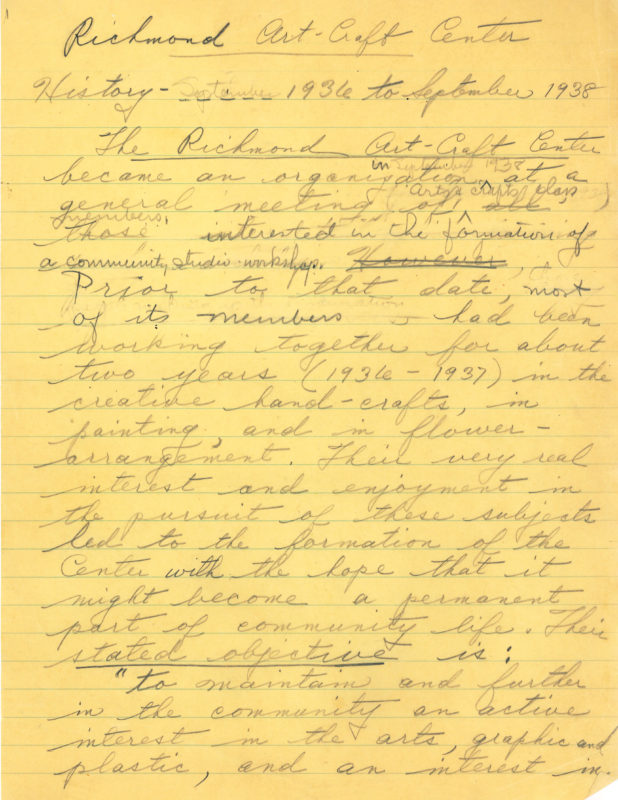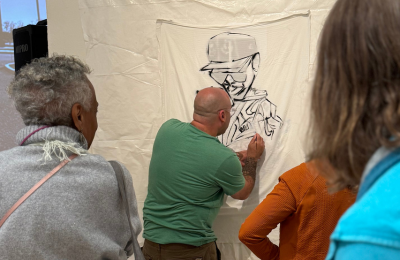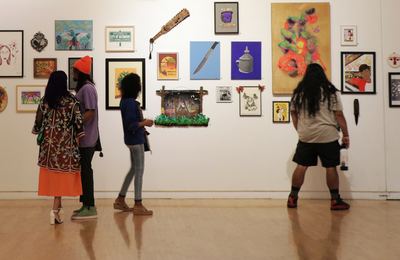History
Recently a volunteer working in the archive at Richmond Art Center discovered a manila folder containing Hazel Salmi’s notes describing the founding of Richmond Art Center. In beautiful cursive handwriting, written in pencil on yellowing tissue-thin paper, Salmi recounts in great detail over forty pages the efforts of herself, local artists and art lovers to establish Richmond Art Center in the 1930s as a “community studio workshop.”
Salmi describes the objective of this workshop was, “To maintain and further in the community an active interest in the arts, graphic and plastic, and an interest in the creative hand-crafts.”
Salmi was a Richmond-resident known for riding her bicycle out into neighborhoods with a small suitcase of art supplies, ready to teach art to anyone who was interested. In 1936 she started teaching classes under the E.E.P. (Emergency Education Program) of the W.P.A. (Works Progress Administration). In 1938 the Center’s first home was established in an old Health Department building owned by the City, with courses taught in “out-door sketching, block printing, flower arrangement, color, wood-carving, and leather tooling” (chosen because they needed the least equipment).
As the City of Richmond grew it had the foresight to imagine what a critical role arts would play in the culture of the city and a purpose-built art center was proposed as part of its new civic infrastructure (the first of its kind in America). The Civic Center facilities were originally master planned and designed by planner Carol Aronovici and famed architects Richard Neutra and R.M. Schindler in the late 1930s. The implementation of this design was interrupted by the Great Depression and World War II and a new design was later executed by San Francisco’s most famous civic architect, Timothy Pflueger. The City Hall, Hall of Justice, Auditorium, Art Center and Public Library complex were completed in 1951. The low, linear forms — from the prominent colonnades that form a band around the Civic Center plaza to the horizontal brickwork cladding to the slender 65-foot wide City Hall building — reflect the mid-century modern style popularized in the late 1940s and 1950s.
In 1951 Richmond Art Center moved to a 24,000 square foot purpose-built facility in the new downtown Civic Center Plaza, where it is still located today. With the new building, featuring six studios, three gallery spaces and large outdoor courtyard, the founding vision for the Center – as a “community studio workshop” – expanded to include an ambitious exhibition program, special events, and outreach programs.
Today Richmond Art Center remains true to Salmi’s vision as a being a place for the community to come together to make and experience art.
—
Read an interview by Shaelyn Hanes with curator Tom Marioni about his time working at Richmond Art Center: Rewriting the Rules: An Interview with Tom Marioni






